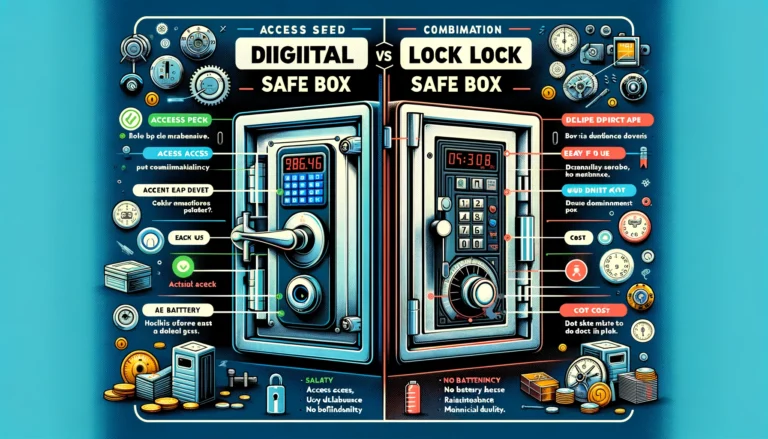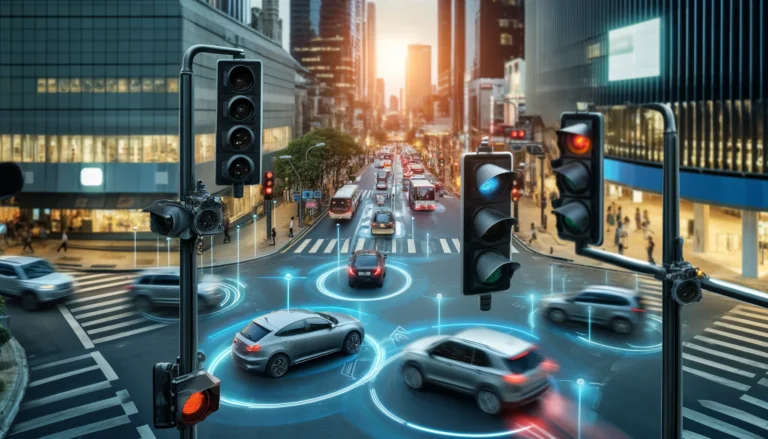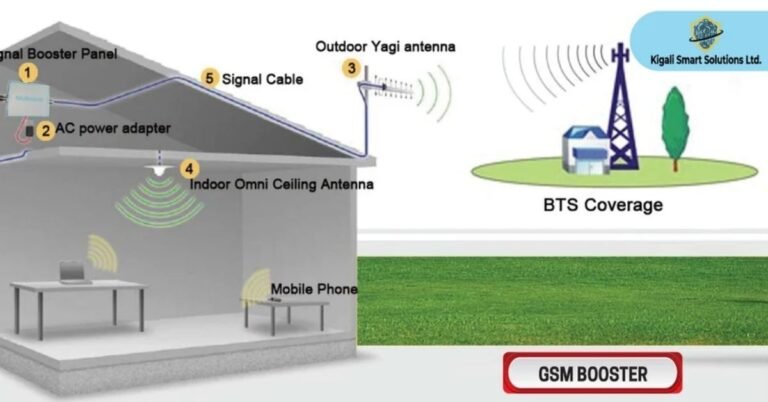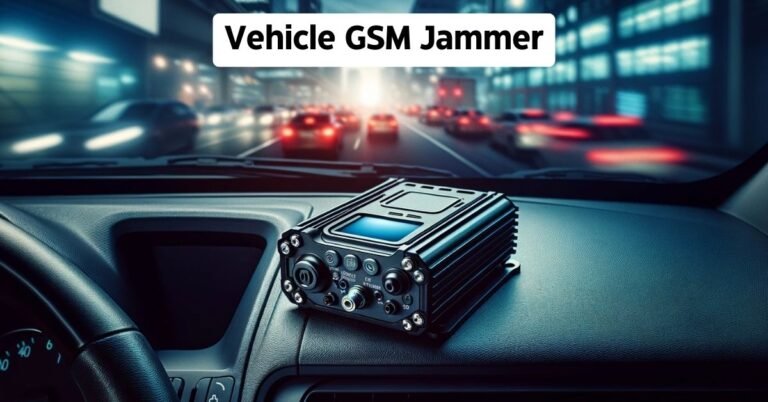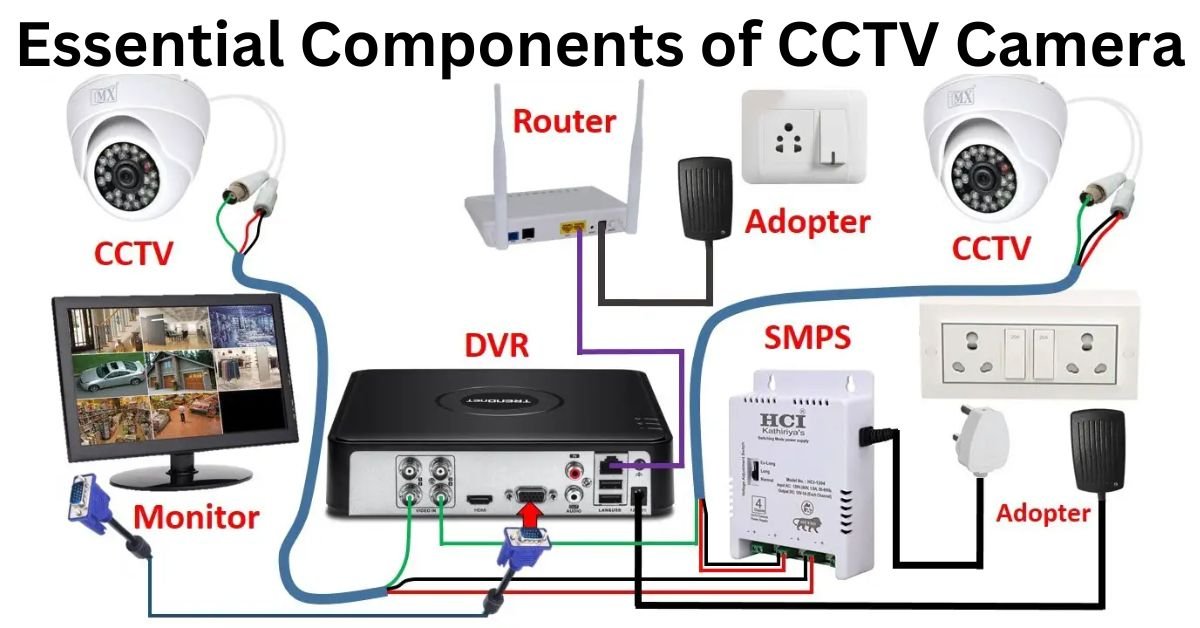In an era where security concerns are paramount, CCTV camera systems stand as indispensable guardians of safety and surveillance. From protecting homes to securing businesses, these systems provide an extra layer of vigilance against potential threats. In this comprehensive guide, we’ll delve into the essential components of CCTV camera systems, shedding light on their functionality, types, installation, and maintenance.
Understanding CCTV Camera Systems
CCTV, or Closed Circuit Television, refers to a system of cameras and monitors used for surveillance purposes in a closed environment. Unlike broadcast television, which is openly transmitted, CCTV footage is transmitted only to a specific set of monitors or recording devices, making it a private and secure form of surveillance.
Essential Components of CCTV Camera Systems
There are 7 Essential Components of CCTV Camera Systems given below.
1. Cameras:
At the heart of every CCTV system are the cameras themselves. These devices capture video footage of the monitored area and come in various types, including dome cameras, bullet cameras, PTZ (Pan-Tilt-Zoom) cameras, and more. Each type is designed for specific surveillance needs, such as indoor or outdoor use, wide-angle coverage, or remote control capabilities.
2. DVR/NVR:
The Digital Video Recorder (DVR) or Network Video Recorder (NVR) serves as the central hub of the CCTV system, where video footage is recorded and stored. DVRs are typically used in analog CCTV systems, while NVRs are used in IP-based systems. Both devices offer features such as motion detection, remote viewing, and playback functionality.
3. Storage
Storage devices, such as hard disk drives (HDDs) or solid-state drives (SSDs), are essential for storing recorded video footage. The size of the storage capacity will depend on factors such as the number of cameras, recording quality, and retention period. It’s crucial to choose storage options that can accommodate the expected volume of footage without compromising performance.
4. Cables and Connectors:
Proper cabling is essential for transmitting video signals from the cameras to the DVR/NVR. Common types of cables used in CCTV systems include coaxial cables for analog cameras and Ethernet cables for IP cameras. Additionally, connectors such as BNC connectors (for analog) and RJ45 connectors (for IP) ensure secure connections between components. This is essential 7 Essential Components of CCTV Camera Systems because without this a CCTV camera can not be connected.
5. Power Supply:
CCTV cameras require a stable power source to operate effectively. Power supplies, such as individual adapters for each camera or centralized power distribution units (PDU), provide the necessary voltage and current to keep the system running smoothly. Backup power options, such as uninterruptible power supplies (UPS), are also recommended to ensure continuous operation during power outages.
6. Monitor:
Monitors display live or recorded video footage from the CCTV cameras. The size and resolution of the monitor will vary depending on the viewing distance and desired image quality. In addition to dedicated monitors, CCTV systems can also utilize computer monitors or even smartphones and tablets for remote viewing capabilities. These are too necessary Components of CCTV Camera Systems to see CCTV footage.
7. Accessories and Peripherals:
Various accessories and peripherals can enhance the functionality of CCTV camera systems. These may include mounting brackets for securing cameras in place, infrared illuminators for night vision capabilities, PTZ controllers for remote camera movement, and video baluns for extending the signal range over longer distances.
Types of CCTV Camera Systems
- Analog CCTV Systems: Traditional analog CCTV systems use analog cameras and DVRs to capture and record video footage. While they offer reliable performance and cost-effective solutions, analog systems are limited in terms of resolution and scalability compared to their digital counterparts.
- IP CCTV Systems: IP-based CCTV systems utilize network cameras (IP cameras) and NVRs to transmit and store video footage over an Ethernet network. IP cameras offer higher resolution, advanced features such as motion detection and analytics, and greater flexibility for remote monitoring and management.
Installation and Maintenance
Proper installation and regular maintenance are crucial for ensuring the effectiveness and longevity of CCTV camera systems. Installation and maintenance are also necessary Components of CCTV Camera Systems. Here are some key steps to consider:
- Site Survey: Conduct a thorough site survey to identify the optimal camera locations, taking into account factors such as lighting conditions, field of view, and potential blind spots.
- Camera Placement: Install cameras at strategic vantage points to maximize coverage and deter potential intruders. Consider factors such as height, angle, and environmental conditions (e.g., weatherproofing for outdoor cameras).
- Cabling and Wiring: Carefully route and secure cables to prevent damage and interference. Use high-quality cables and connectors to ensure reliable signal transmission.
- Configuration and Testing: Configure DVR/NVR settings, such as recording schedules, motion detection zones, and remote access permissions. Test the system thoroughly to verify functionality and address any issues before deployment.
- Regular Maintenance: Perform routine maintenance tasks, such as cleaning camera lenses, checking cable connections, and updating firmware/software, to keep the system operating at peak performance.
CCTV camera systems play a vital role in safeguarding homes, businesses, and public spaces against security threats. By understanding the essential Components of CCTV Camera Systems, types, installation, and maintenance considerations, you can harness the full potential of CCTV technology to enhance safety and surveillance. Whether you’re looking to protect your property or monitor critical infrastructure, a well-designed and properly maintained CCTV system provides peace of mind and actionable insights to address security challenges effectively.
Buy Components of CCTV Camera Systems. Follow us on Instagram.
